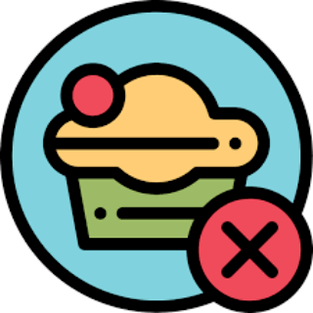The Japanese diet has gained wide popularity among people who want to lose weight. Mostly they are attracted by the short duration (only 14 days) and the availability of the necessary products.
How the Japanese diet came about
Many people believe that the Japanese diet is related to the daily diet of the people of this country, but this is not the case. Most likely, the diet received this name due to the need for strict adherence to the diet and high efficiency. The Japanese are very obligatory and responsible people, they approach every business with all their attention and follow the established rules precisely, which is why they get a high result.
Another version of the name's appearance is where the diet was invented. It is believed to have been developed at the Yaeks Japanese Clinic. Nutritionist Naomi Moriyama, who developed the weight loss system, is fully confident in its effectiveness and adaptability of products to the usual diet of Europeans, whose tastes differ significantly from the Japanese.
The benefits of the Japanese diet

The Japanese diet will help cleanse the body of toxins, as well as to regulate the metabolism in just 14 days.
A large amount of fruit will saturate the body with fiber and help improve bowel function, and a sufficient amount of food will maintain a feeling of satiety and high productivity.
Characteristics and principles
The diet, unlike many others, does not involve partial nutrition. It is designed for three meals without additional snacks. You can't change the days of the diet in places and in no way try to "improve" the diet, otherwise it is no longer a Japanese diet and you will have to start over.
You should drink a glass of cold water every morning, this will help speed up your metabolism and get rid of the feeling of hunger. During the rest of the time it is also recommended to drink as much pure mineral (non-carbonated) or boiled water as possible.
Shopping list

To successfully maintain your diet, you need to buy the following foods:
- 1 pack of green tea of any kind you like. Make sure there are no fragrances in the composition.
- 1 pack of good coffee beans (or ground).
- 2 cassettes (20 pcs. ) Chicken eggs.
- 1 kg. chicken fillet (breast).
- 1 kg. beef porridge (it is better to take lean).
- 2 kg. sea fish fillet.
- 0, 5 liters of extra virgin olive oil.
- 2 medium white cabbage.
- 1 kg. zucchini or eggplant.
- 2-3 kg. fresh carrots.
- 1 kg. all fruits other than bananas and grapes.
- 1 liter of tomato juice.
- 1 liter of kefir.
- 2 lemons.
All provisions should be fresh and the best you can find.
What should not be in the diet

Avoid sugar and salt completely during the Japanese diet. The same rule applies to all types of baked goods, confectionery and alcoholic beverages.
Japanese diet menu during the day
The Japanese diet is very similar in its diet to the well-known chemical diet, which is often used to treat obesity in diabetics. It also uses the effect of reducing the amount of carbohydrates, while increasing the proportion of protein.
The diet menu is quite strict, no changes are allowed in it.
Day 1
- Breakfast: black coffee without added sugar, sweeteners or milk.
- Lunch: 2 hard-boiled eggs, boiled cabbage, seasoned with vegetable oil and a glass of tomato juice.
- Dinner: 200 g of fried or boiled fish.
Day 2
- Breakfast: black coffee with a slice of rye bread.
- Lunch: boiled cabbage, seasoned with vegetable oil + 200 g of fried or boiled fish.
- Dinner: a glass of kefir with 100 g of boiled beef.
Day 3
- Breakfast: black coffee with a slice of rye bread warmed in a toaster (you can replace it with a tasteless biscuit without flavor).
- Lunch: any number of zucchini or eggplant fried in vegetable oil.
- Dinner: salad of raw cabbage, seasoned with vegetable oil + 200 g of boiled beef without salt.
Day 4
- Breakfast: fresh medium-sized carrots, cut on a grater or other convenient way + juice of whole lemon.
- Lunch: a glass of tomato juice + 200 g of boiled or fried fish.
- Dinner: salad of 200 g of any fruit.
Day 5
- Breakfast: fresh medium-sized carrots, cut on a grater or other convenient way + juice of whole lemon.
- Lunch: a glass of tomato juice + 200 g of boiled fish.
- Dinner: 200 g of any fresh fruit.
Day 6
- Breakfast: black coffee without additives.
- Lunch: 500 g of boiled chicken breast without salt + salad of fresh carrots and cabbage, seasoned with oil.
- Dinner: whole fresh carrots + 2 boiled eggs.
Day 7
- Breakfast: a cup of green tea.
- Lunch: 200 g of boiled beef without salt.
- Dinner: 200 g of each fresh fruit or 200 g of boiled or fried fish, or 2 boiled eggs + fresh carrots, or a piece of boiled beef with a glass of kefir.
Day 8
- Breakfast: black coffee.
- Lunch: 500 g of boiled chicken breast without salt + salad of raw carrots with cabbage, seasoned with vegetable oil.
- Dinner: 2 boiled eggs + fresh carrot salad, dressed with vegetable oil.
Day 9
- Breakfast: fresh carrots seasoned with lemon juice.
- Lunch: 200 g of boiled or fried fish with a glass of tomato juice.
- Dinner: 200 g of any fresh fruit.
Day 10
- Breakfast: black coffee without sugar.
- Lunch: 3 medium carrots, dressed with vegetable oil + boiled egg + 50 g of cheese.
- Dinner: 200 g of any fresh fruit.
Day 11
- Breakfast: black coffee without additives with a slice of rye bread.
- Lunch: any amount of eggplant or zucchini fried in vegetable oil.
- Dinner: 200 g of boiled unsalted beef, fresh cabbage salad, seasoned with vegetable oil and 2 boiled eggs.
Day 12
- Breakfast: black coffee.
- Lunch: 200 g of boiled or fried fish with fresh cabbage salad, seasoned with vegetable oil.
- Dinner: a glass of kefir + 100 g of boiled beef without salt.
Day 13
- Breakfast: black coffee without additives.
- Lunch: boiled cabbage, seasoned with vegetable oil + a glass of tomato juice + 2 boiled eggs.
- Dinner: 200 g of boiled or fried beef in vegetable oil.
Day 14
- Breakfast: black coffee without additives.
- Lunch: 200 g of boiled or fried fish, fresh cabbage salad, seasoned with olive oil.
- Dinner: 200 g of boiled beef without salt + a glass of kefir.
How to stay on a diet

In order not to disturb your diet at the most inopportune moment, try to follow the recommendations:
- plan it for the month when there are no big holidays and trips;
- always remember the motivation for which you lost weight;
- find a hobby;
- argue with a loved one that you will not break;
- just believe in your own strength!
How to get in and out of the Japanese diet
Every diet is a great stress for the body, so you need to prepare for it in advance.

At least a week before the appointed day, start limiting your sugar intake and also gradually reduce your food portions. Also try to reduce (or even exclude) from the diet all dishes that can be categorized as "fast food", "sweet" or "starchy". For example, if you ate 5 cakes a day, then one shouldbe removed from the diet every day of the week. Then, until the first day of the diet, the body will live peacefully for 2 days without cakes.
Many people find it very helpful to surround themselves with various Japanese accessories (sticks, tea ceremonies, figurines, etc. ). They will help you to adjust psychologically in the right way.
When the diet is over, you should never run away and overeat with your favorite foods. Start gradually introducing familiar foods into your diet, starting with small portions. Then the effect of weight loss will be able to last several years, because it is not recommended to repeat the diet earlier. The best solution would be to present yourself for proper nutrition, this habit will allow you to always stay in shape.
Contraindications
There are no perfect diets, so even this system may not suit everyone. First of all, in the process of dietary restrictions, the body is forced to go through serious psychological tests. This is especially true for people who live in big cities, where you can find all kinds of cafes and fast food restaurants at every turn. In addition, during the diet there is a serious restriction of access to nutrients and this is an additional stress for the body.
If a person has problems with the work of the cardiovascular system, kidneys or liver, he has chronic gastritis or ulcer, in any case should not be subjected to a Japanese diet. Otherwise, all diseases can worsen sharply: a large amount of fluid will affect the kidneys, and green tea and coffee have a sharp effect on the heart due to the high content of caffeine.
Also, salt restriction can have serious consequences. Every doctor will confirm that a small amount of salt is simply necessary for the body to function normally and its abrupt rejection leads to the withdrawal of fluids and thickening of the blood in the vessels. Therefore, many experts still advise a slight addition of salt to food, despite strict dietary recommendations.
The Japanese diet has a huge number of advantages, is easily tolerated, but can be contraindicated in people with certain diseases. Gwyneth Paltrow and many other celebrities have effectively lost weight on it.































